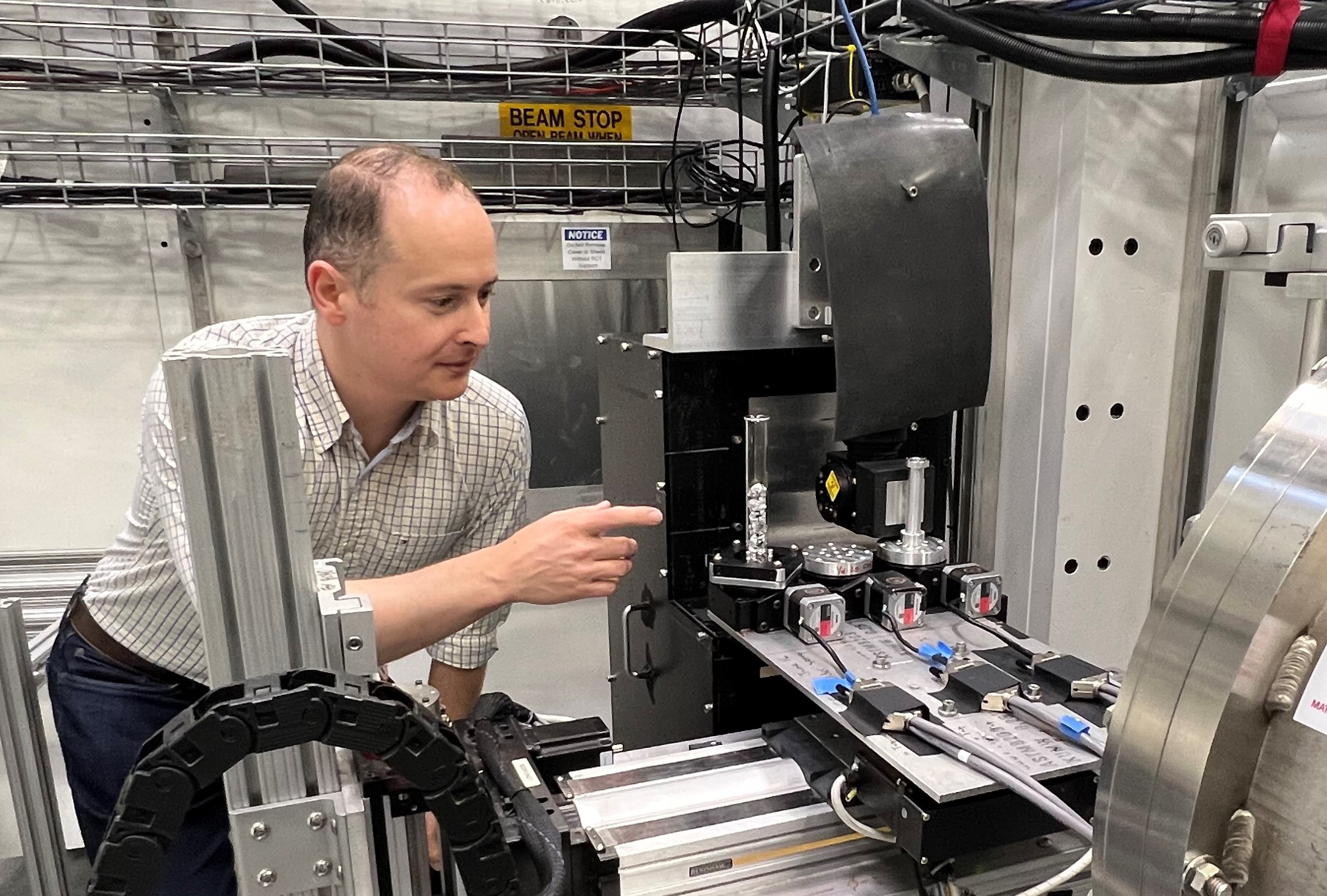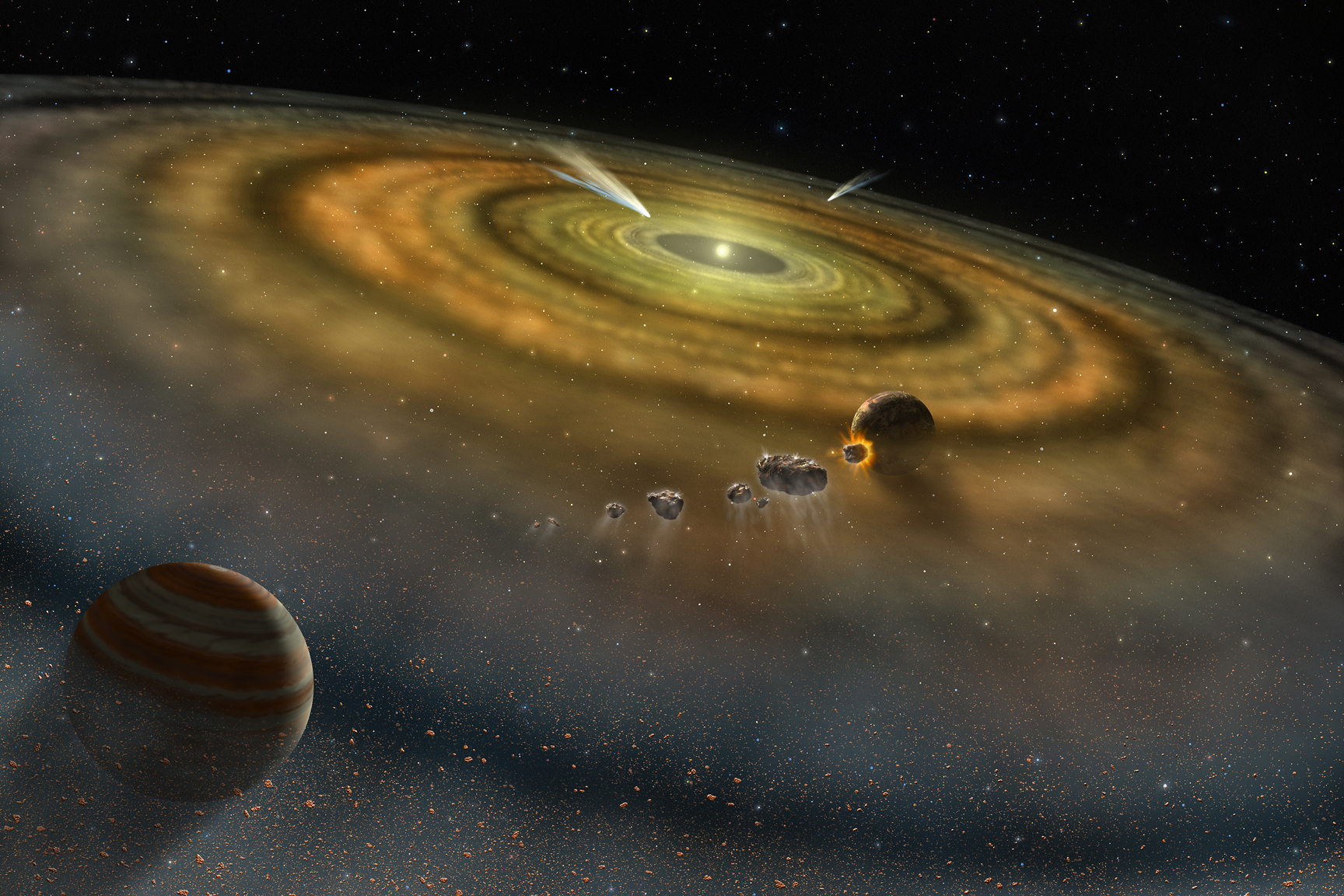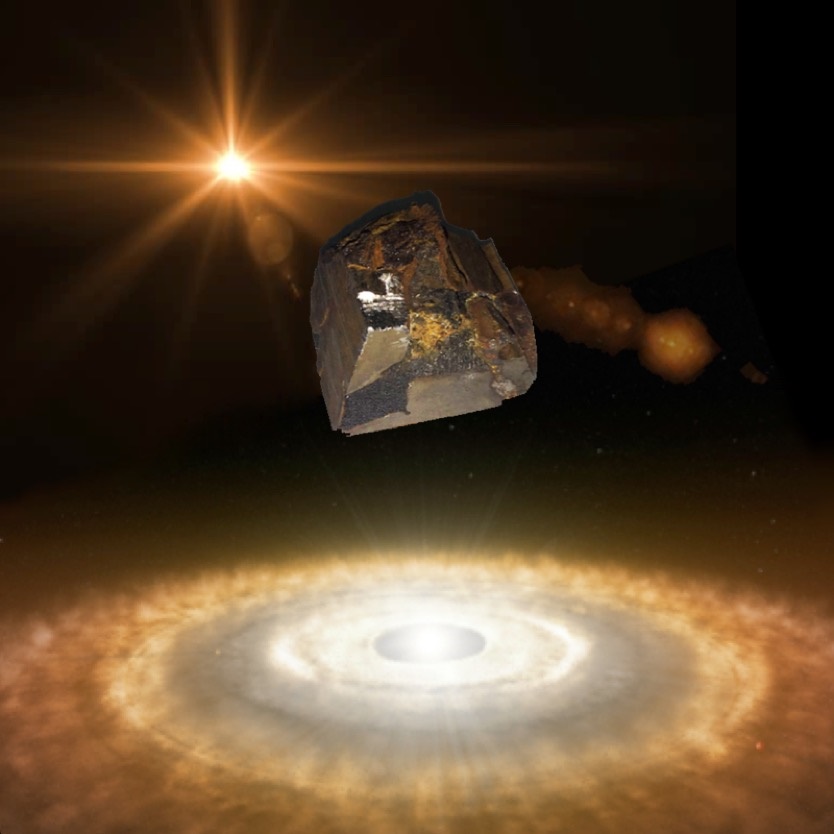Lawrence Livermore National Laboratory (LLNL) scientists recently received and will analyze samples from the asteroid Bennu that will help explain how it formed and where it came from.
Tag: Meteorites

50 years after NASA’s Apollo mission, moon rocks still have secrets to reveal
NASA scientists are using neutrons at Oak Ridge National Laboratory to study moon rocks collected from the Apollo space missions. The samples are made of dust and rock fragments that combined and struck the moon’s surface possibly billions of years ago. As plans to travel to Mars progress, insights into the rocks could reveal more about the formation of the solar system and where water might be found on the moon.
Could the blueprint for life have been generated in asteroids?
Using new analyses, scientists have just found the last two of the five informational units of DNA and RNA that had yet to be discovered in samples from meteorites.
A bigger nursery for the solar system’s first formed solids
The earliest solids formed in the solar system give clues to what radioactive species were made by the young sun, and which ones were inherited. By studying isotopic variations of the elements vanadium (V) and strontium (Sr), an international team of researchers including scientists from Lawrence Livermore National Laboratory found that those variations are not caused by irradiation from the sun but are produced by condensation and evaporation reactions in the early solar system.
Magnetic Patterns Hidden in Meteorites Reveal Early Solar System Dynamics
Within meteorites, the magnetic fields associated with the particles that make up the object can act as a historical record.
Polymers in Meteorites Provide Clues to Early Solar System
Meteorites that do not experience high temperatures at any point in their existence provide a good record of complex chemistry present when or before our solar system was formed. So researchers have examined individual amino acids in these meteorites, many of which are not in present-day organisms. In Physics of Fluids, researchers show the existence of a systematic group of amino acid polymers across several members of the oldest meteorite class, the CV3 type.
Science Snapshots From Berkeley Lab
Science Snapshots From Berkeley Lab – Water purification, infant-warming device, cuff-based heart disease monitor, ancient magnetic fields

The solar system took less than 200,000 years to form
A long time ago – roughly 4.5 billion years – our sun and solar system formed over the short time span of 200,000 years. That is the conclusion of a group of Lawrence Livermore National Laboratory (LLNL) scientists after looking at isotopes of the element molybdenum found on meteorites.

Scientists Observe Superconductivity in Two Meteorites
Researchers from UC San Diego and Brookhaven Laboratory in New York investigated a diverse population of meteorites. Among the 15 pieces of comets and asteroids studied, they found two with superconductive grains.